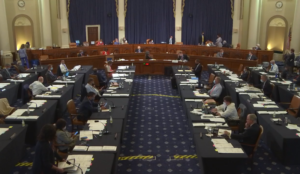
The Department of Defense would get close to its requested funding for most strategic nuclear weapons programs, under a 2021 spending bill approved on a party-line vote Tuesday by the House Appropriations Committee. Nobody offered amendments that would affect nuclear weapons funding during the four-hour markup, which this year was dominated by partisan debate about hot-button issues that provided lawmakers in an election year with opportunities to update their voting records. As with the Energy and Water appropriations bill the…

 By
By 











